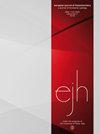Low ozone concentrations do not exert cytoprotective effects on tamoxifen-treated breast cancer cells in vitro.
IF 2.1
4区 生物学
Q4 CELL BIOLOGY
引用次数: 0
Abstract
Medical treatment with low ozone concentrations proved to exert therapeutic effects in various diseases by inducing a cytoprotective antioxidant response through the nuclear factor erythroid derived-like 2 (Nrf2) transcription factor pathway. Low ozone doses are increasingly administered to oncological patients as a complementary treatment to mitigate some adverse side-effects of antitumor treatments. However, a widespread concern exists about the possibility that the cytoprotective effect of Nrf2 activation may confer drug resistance to cancer cells or at least reduce the efficacy of antitumor agents. In this study, the effect of low ozone concentrations on tamoxifen-treated MCF7 human breast cancer cells has been investigated in vitro by histochemical and molecular techniques. Results demonstrated that cell viability, proliferation and migration were generally similar in tamoxifen-treated cells as in cells concomitantly treated with tamoxifen and ozone. Notably, low ozone concentrations were unable to overstimulate the antioxidant response through the Nfr2 pathway, thus excluding a possible ozone-driven cytoprotective effect that would lead to increased tumor cell survival during the antineoplastic treatment. These findings, though obtained in an in vitro model, support the hypothesis that low ozone concentrations do not interfere with the tamoxifen-induced effects on breast cancer cells.低浓度臭氧在体外对他莫昔芬处理过的乳腺癌细胞没有细胞保护作用。
事实证明,低浓度臭氧通过核因子红细胞衍生样2(Nrf2)转录因子途径诱导细胞保护性抗氧化反应,从而对多种疾病产生治疗效果。越来越多的肿瘤患者使用低剂量臭氧作为辅助治疗,以减轻抗肿瘤治疗的一些不良副作用。然而,人们普遍担心 Nrf2 激活的细胞保护作用可能会使癌细胞产生抗药性,或至少降低抗肿瘤药物的疗效。本研究通过组织化学和分子技术,在体外研究了低浓度臭氧对他莫昔芬处理过的 MCF7 人类乳腺癌细胞的影响。结果表明,他莫昔芬处理过的细胞与他莫昔芬和臭氧同时处理过的细胞在活力、增殖和迁移方面基本相似。值得注意的是,低浓度臭氧无法通过 Nfr2 途径过度刺激抗氧化反应,因此排除了臭氧可能产生的细胞保护作用,这种作用会导致肿瘤细胞在抗肿瘤治疗期间存活率增加。这些发现虽然是在体外模型中获得的,但支持了低浓度臭氧不会干扰他莫昔芬对乳腺癌细胞诱导作用的假设。
本文章由计算机程序翻译,如有差异,请以英文原文为准。
求助全文
约1分钟内获得全文
求助全文
来源期刊

European Journal of Histochemistry
生物-细胞生物学
CiteScore
3.70
自引率
5.00%
发文量
47
审稿时长
3 months
期刊介绍:
The Journal publishes original papers concerning investigations by histochemical and immunohistochemical methods, and performed with the aid of light, super-resolution and electron microscopy, cytometry and imaging techniques. Coverage extends to:
functional cell and tissue biology in animals and plants;
cell differentiation and death;
cell-cell interaction and molecular trafficking;
biology of cell development and senescence;
nerve and muscle cell biology;
cellular basis of diseases.
The histochemical approach is nowadays essentially aimed at locating molecules in the very place where they exert their biological roles, and at describing dynamically specific chemical activities in living cells. Basic research on cell functional organization is essential for understanding the mechanisms underlying major biological processes such as differentiation, the control of tissue homeostasis, and the regulation of normal and tumor cell growth. Even more than in the past, the European Journal of Histochemistry, as a journal of functional cytology, represents the venue where cell scientists may present and discuss their original results, technical improvements and theories.
 求助内容:
求助内容: 应助结果提醒方式:
应助结果提醒方式:


